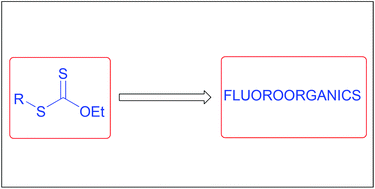The xanthate route to organofluorine derivatives. A brief account†
Abstract
The present account summarises routes to organofluorine derivatives based on the chemistry of xanthates developed in the author's laboratory. It concerns mostly radical pathways, but a few ionic transformations are also discussed. The degenerative reversible transfer of xanthates allows radical addition even to unactivated alkenes and tolerates numerous functional groups, in particular common polar groups such as ketones, esters, amides, carbamates, nitriles etc. Since the fluorine atoms can be placed on the alkene or the xanthate partner or on both, this opens a convergent approach to a vast array of otherwise inaccessible organofluorine structures that could be of interest to the pharmaceutical and agrochemical industries and to materials science.

- This article is part of the themed collection: Contemporary Synthetic Chemistry in Drug Discovery

 Please wait while we load your content...
Please wait while we load your content...